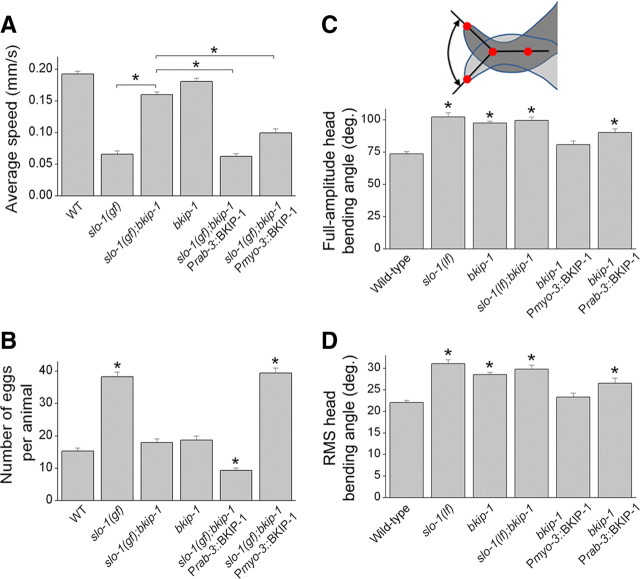Figure 3.
BIKP-1 functioned together with SLO-1 in controlling worm behavior. A, bkip-1(lf) mutant suppressed the locomotion defects caused by slo-1(gf), which could be reversed by expressing wild-type (WT) BKIP-1 either in neurons under the control of Prab-3 or in body-wall muscle cells under the control of Pmyo-3. Twenty to 30 worms were analyzed in each group. B, bkip-1(lf) mutant suppressed the egg-laying defect caused by slo-1(gf), which could be reversed by expressing wild-type BKIP-1 in muscle cells under the control of Pmyo-3. The number of eggs retained in the uterus was counted 24 h after late L4 stage at room temperature. Ten worms were analyzed in each group. C, D, bkip-1(lf) increased the head-bending angle, which could be reversed by expressing wild-type BKIP-1 in muscle cells under the control of Pmyo-3 but not in neurons under the control of Prab-3. Both the mean full-amplitude dorsal/ventral bending angle (C), as depicted in the diagram, and the root mean square of bending activities (D) were analyzed. The number of worms analyzed for the head-bending angle was 10 for each group. For all panels, data are shown as mean ± SE, and *indicates a statistically significant difference between the indicated groups (A) or compared with the wild-type (B–D) (p < 0.01, one-way ANOVA with Bonferroni's post hoc test).

